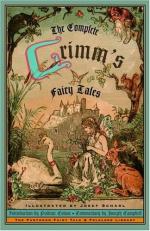|
This section contains 5,206 words (approx. 18 pages at 300 words per page) |

|
SOURCE: "Sleeping Beauty: The Meaning and Form of Fairy Tales," in Once Upon a Time: On the Nature of Fairy Tales, Frederick Ungar Publishing Co., 1970, pp. 21-34.
In the following essay, Lüthi analyzes the Grimms' version of "Sleeping Beauty" and considers other variants of the tale.
Our attitude toward fairy tales (Märchen) is ambivalent. "Don't tell me any fairy tales," we say, in the derogatory sense. Here, the term is only a politer expression for cleverly contrived lies. On the other hand, when we admire something especially beautiful, the word märchenhaft (i.e., like a fairy tale) almost spontaneously comes to mind. Here, it does not mean unreal in the sense of untrue, but in the sense of unearthy or divine. Thus, even in everyday usage, our language suggests both rejection of, and fascination by, the fairy tale.
For centuries, educated people have looked down...
|
This section contains 5,206 words (approx. 18 pages at 300 words per page) |

|


